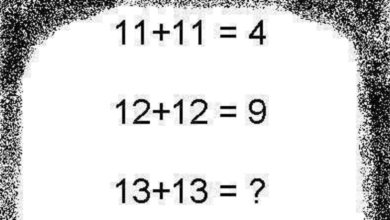Lady Justice: The symbolism, hory and colonial legacy of blindfolded statue | Trending

It is a symbol imprinted in our collective psyche – the statue of a blindfolded woman holding a set of scales in one hand and a sword in the other. For centuries, this statue of Lady Justice has stood to represent the principle that the law is blind. It has been used in Bollywood movies, in fiction, even on the cover of rock albums. On Thursday, however, India woke up to the surprising news that the Lady Justice statue has been given a new avatar in the country’s Supreme Court to spread the message that the law is, in fact, not blind. Lady Justice is usually represented as blindfolded and holding a set of scales The Lady Justice statue which now stands tall in the judges’ library has shed its blindfold and its sword – it now holds the Constitution instead. The symbolism of Lady JusticeLady Justice is most often depicted with a blindfold, scales, and a sword. Here is what each of these elements symbolises: The blindfold represents impartiality. It signifies that justice should be adminered without bias, treating everyone equally regardless of wealth, power, or social status. The ideal of “Law is blind” is embodied in this blindfolded woman who weighs each argument based purely on facts and law. The scales represent balance and fairness. They have been retained in the new Supreme Court statue to emphasise that courts weigh both sides of an argument before delivering a judgement. Finally, the sword symbolises the power and authority of the law. The sword is often depicted as double-edged, signifying that the law can both protect and punish. Lady Justice therefore embodies the symbolic attributes of impartiality (the blindfold), fairness (the scales), and enforcement (the sword). The hory of Lady JusticeThe figure of Lady Justice originates from ancient Greek and Roman iconography. She is believed to be the allegorical personification of the law and moral force that drives society. In ancient Greece, Themis was a Titaness, often depicted with scales and a sword, who was associated with divine law and moral justice. However, the symbolism of the scales representing justice predates even ancient Greece – it first appears with Maat, the goddess of truth and justice in ancient Egypt. It is widely believed that the origin of modern-day Lady Justice is Justitia, the goddess of Justice in Roman mythology, who was also known as Iustitia. Lady Justice was increasingly associated with Chrian values during the mediaeval period. However, it was only during the Renaissance when the figure became more prevalent in art and architecture. It was during this time that the statue of the blindfolded woman began appearing in courtrooms and legal texts and became aligned with the ideals of the emerging legal systems. The colonial legacy of Lady JusticeWhile Lady Justice depicts impartiality and fairness, its hory in India is slightly more complicated. In fact, the commission of a new statue Justice Chandrachud is being seen as an attempt to leave behind India’s colonial legacy as the country steps into a new era with the Bharatiya Nyaya Sanhita. It was during British rule in India that this symbol became a representation of justice in the country. When the British established their control over India, they introduced their own legal system. In seeking to create a uniform legal code, they systematically dismantling regional legal systems. One of the British legal system’s most enduring legacy in India is the hierarchy of courts, while the Indian Penal Code introduced the British was only recently replaced the Bharatiya Nyaya Sanhita. It was also during the British rule that Lady Justice became a prominent symbol in India. The presence of Lady Justice statues outside Indian courthouses serves as a reminder of this colonial legacy.







